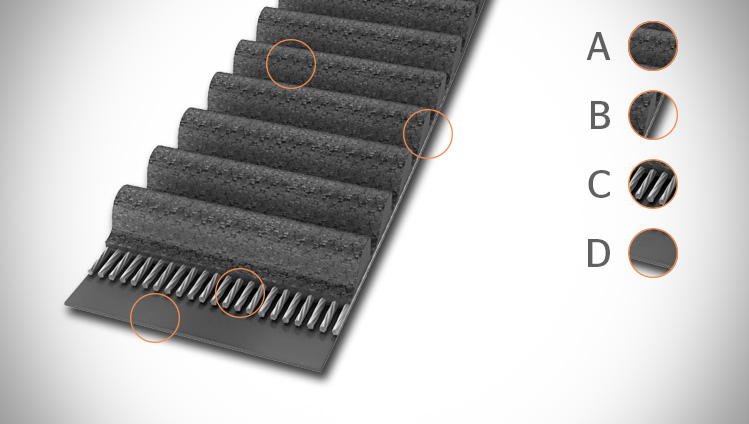Design and function
A timing belt consists essentially of:
A) Polyamide fabric, sometimes also on the belt backing
B + D) Synthetic rubber, sometimes fiber-reinforced
C) Tension member made of glass-fiber

The timing belt controls the precise combustion process in the engine: It drives the camshaft which in turn controls the valves. Its function is particularly important because, if the camshaft and the crankshaft do not run synchronously, the engine will not work. In the worst-case scenario the valves and pistons can collide at full speed with each other in the engine. This results in engine failure!
The timing belt often also takes on additional tasks such as driving the fuel injection pump, the water pump or the balancer shaft.
Notes
Handling:
Timing belts must not be creased since this will cause the glass-fiber tension members to break inside the belt. The belt’s load-carrying capacity is then no longer assured and it can tear. Consequence: Engine failure.
Replacement interval:
Timing belts are subject to aging and wear. They therefore have to be regularly checked and replaced. The checking and replacement intervals are always specified by the vehicle manufacturer and must be complied with.
Storage:
- Store in a dry, dust-free and cool place (ideally 15-25°C)
- Avoid direct sunlight
- Avoid contact with all liquids (oil, water etc.)
- Maximum storage period: 5 years from date of production
Tips:
- Leave timing belt in its original packaging until ready for use
- Continental offers a wide range of special tools for fitting
- When changing the timing belt, you should also change the tensioning pulley and idlers and, possibly, the water pump as a precaution. Continental offers complete timing belt kits for this purpose.